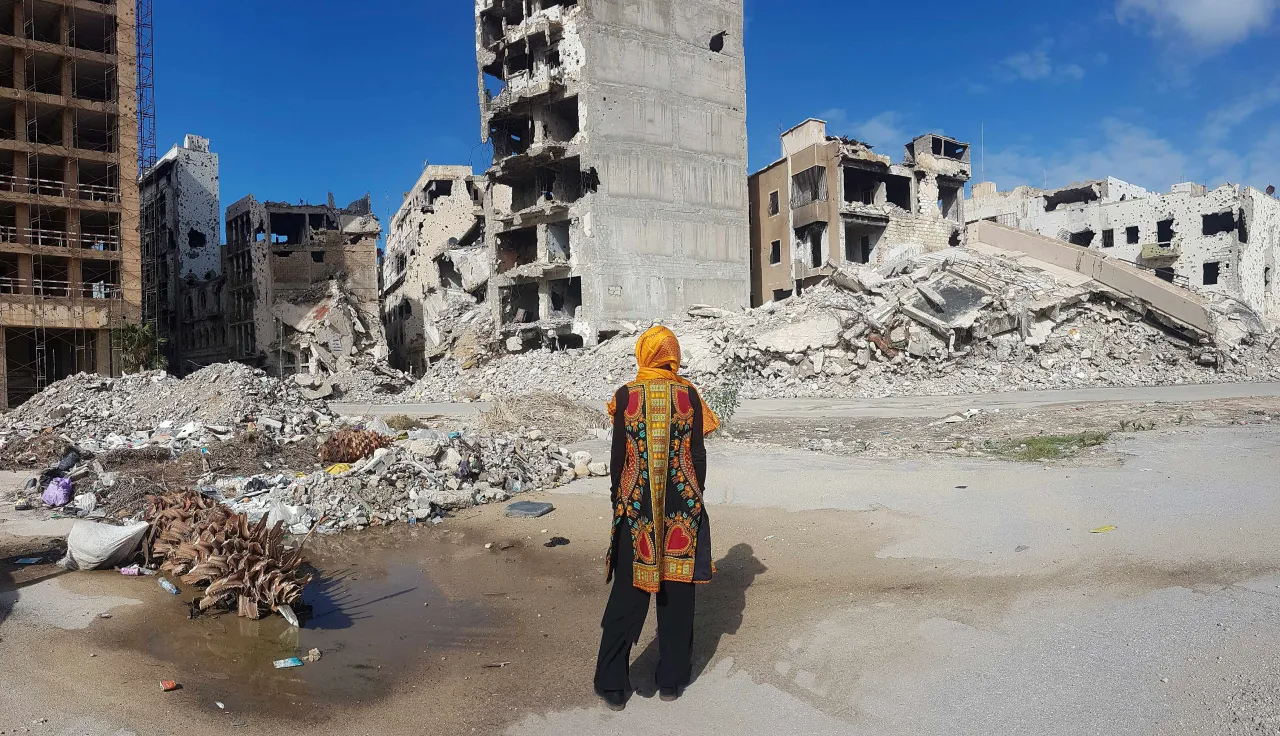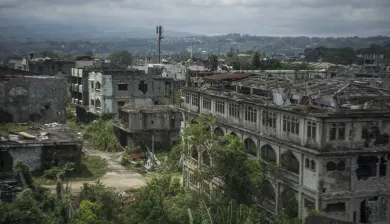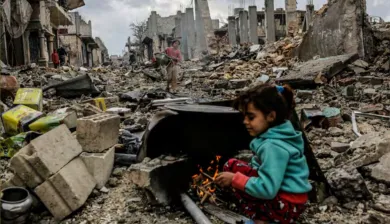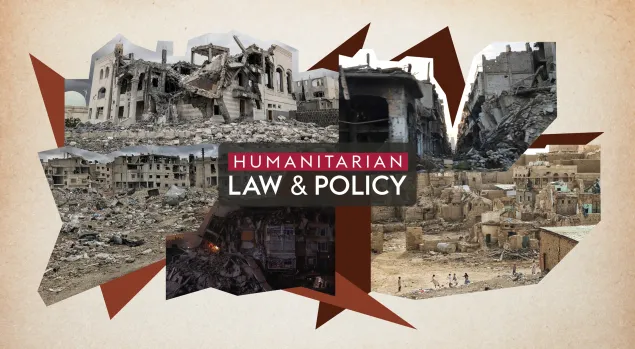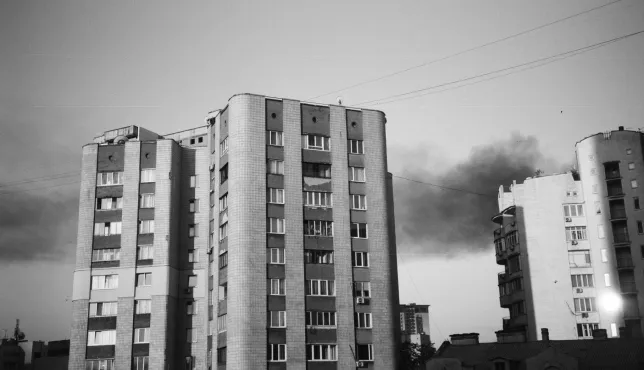The impact of warfare and violence in urban areas
An unbearable human toll
In urban centres, civilians and military objectives are often found in the same areas. Heavy explosive weapons, such as large bombs, missiles, rockets, mortars and artillery shells, are more likely to hit the military target, but their wide, inaccurate and all too often indiscriminate blast areas take down everything around them too. They significantly affect civilians, causing deaths, injuries and trauma.
Ceaseless worry about loved ones' safety and unremitting anxiety about food and other necessities exacerbate all the personal difficulties associated with the traumatizing situation. Intense grief is common, as is fear. While most people will be able to continue to function and cope with the distress they have endured, others will suffer incapacitating psychological trauma.
Life interrupted
Urban fighting often destroys or damages the critical infrastructure necessary to supply vital services such as electricity, water and sanitation, health care, food and education. Urban residents, who depend for their daily survival on the supporting infrastructure, and on goods and services provided by others, are inherently vulnerable to market and supply disruptions. One failure often results in the collapse of many others. This creates greater risks to public health and people's livelihoods, which may in turn lead to the massive displacement of populations.
Bombing and shelling may also irreparably damage hospitals, prevent ambulances from reaching the wounded, and disrupt medical supplies. Medical personnel, as civilians, also suffer directly and can be forced to leave their jobs and flee.
Run for your life
As neighbourhoods become front lines, the basics of life – water, food, health care, jobs, education and decent accommodation – suddenly become hard to find. People are often forced to flee their homes, overturning their lives and exposing themselves to greater risks, such as sexual and gender-based violence, as they lose their livelihoods and support networks. It then usually falls to local communities – which may also be suffering from the effects of conflict – to help those who have been displaced.
Even after the guns have fallen silent, displacement can continue for years, as homes and infrastructure have been destroyed and unexploded and abandoned explosive devices litter residential areas. They may take years, decades even, to be cleared, preventing residents from returning safely.
Back to square one
The massive destruction caused by conflict in cities can set development indicators back decades.
As people leave for safety or better opportunities, the “brain drain” of those who knew how to build, run and maintain infrastructure – and the complex systems that require it – becomes an issue. Similarly, the security situation and school closures mean that children may be unable to go to school for years, impeding an entire generation in their quest for a better life.
The humanitarian consequences of urban warfare are complex, direct and indirect, immediate and long-term, visible and invisible. But they are not an inevitable by-product of warfare.

